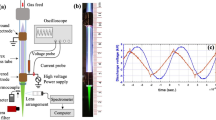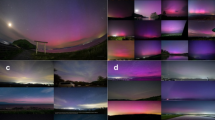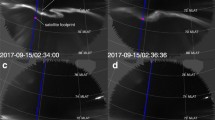Abstract
MESSRS. McLennan, McLeod and McQuarrie have published in NATURE, vol. 118, page 441 (Sept. 25, 1926) the results of some recent experiments on the origin of the auroral green line 5577. During July and August last, while a guest of the Nela Park Research Laboratory, at the kind invitation of Dr. W. E. Forsythe, I had the opportunity of investigating spectroscopically the electrical discharge in mixtures of (1) helium with oxygen, and (2) argon with oxygen. The relative proportions of the two gases in each mixture were varied as well as the current through the gases. In the case of helium with oxygen, traces of this green line were found on some plates, but its intensity was usually very feeble. In one experiment, however, with argon and oxygen, the line 5577 appeared very strongly, about one-half the intensity of the argon line 5559, the iron arc spectrum being used for comparison (Fig. 1. I am indebted to Prof. Lloyd for the enlargement).
This is a preview of subscription content, access via your institution
Access options
Subscribe to this journal
Receive 51 print issues and online access
$199.00 per year
only $3.90 per issue
Buy this article
- Purchase on SpringerLink
- Instant access to full article PDF
Prices may be subject to local taxes which are calculated during checkout
Similar content being viewed by others
Author information
Authors and Affiliations
Rights and permissions
About this article
Cite this article
KEYS, D. The Auroral Green Line 5577. Nature 119, 162 (1927). https://doi.org/10.1038/119162b0
Issue date:
DOI: https://doi.org/10.1038/119162b0



